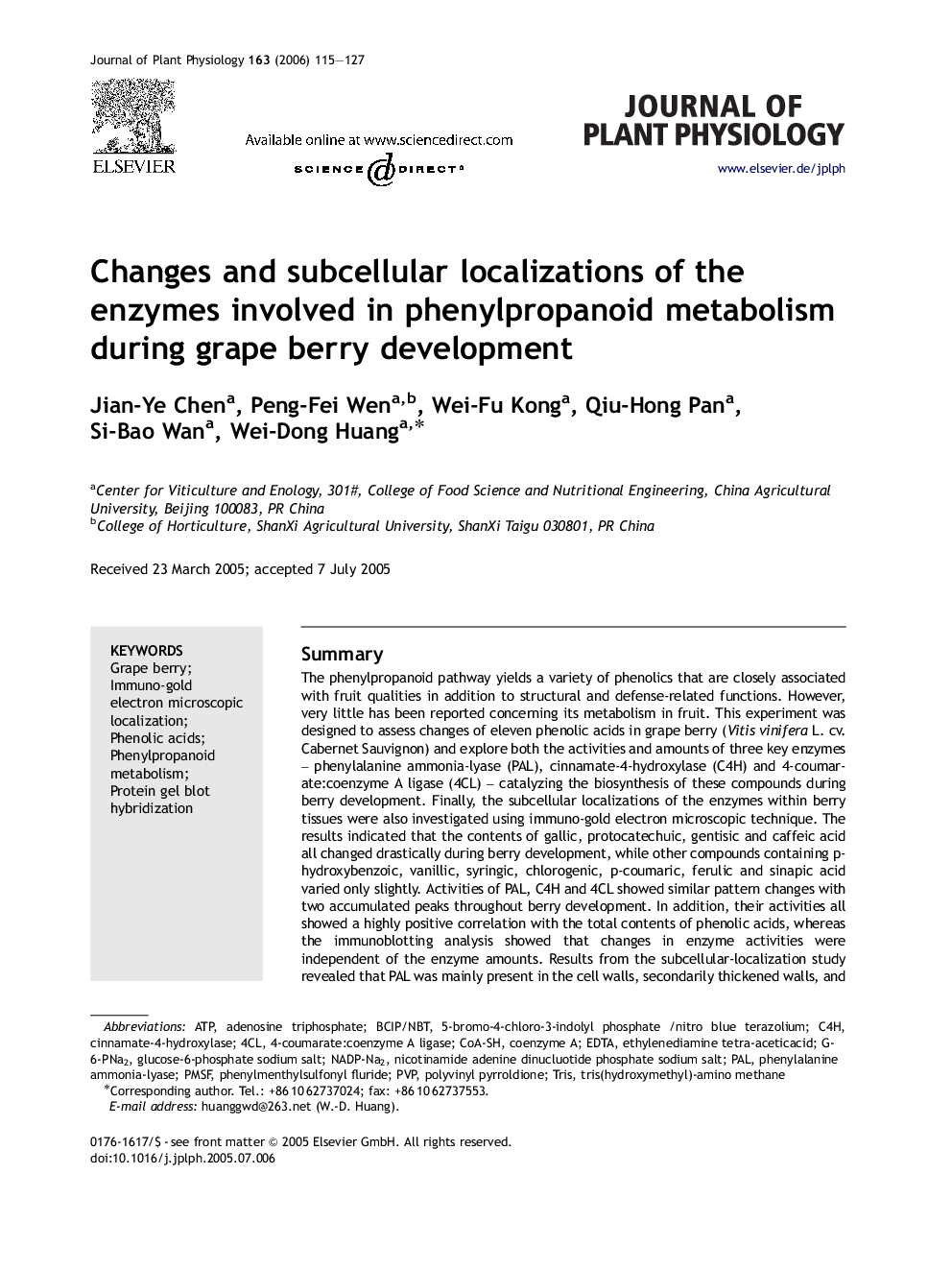| Article ID | Journal | Published Year | Pages | File Type |
|---|---|---|---|---|
| 2057592 | Journal of Plant Physiology | 2006 | 13 Pages |
SummaryThe phenylpropanoid pathway yields a variety of phenolics that are closely associated with fruit qualities in addition to structural and defense-related functions. However, very little has been reported concerning its metabolism in fruit. This experiment was designed to assess changes of eleven phenolic acids in grape berry (Vitis vinifera L. cv. Cabernet Sauvignon) and explore both the activities and amounts of three key enzymes – phenylalanine ammonia-lyase (PAL), cinnamate-4-hydroxylase (C4H) and 4-coumarate:coenzyme A ligase (4CL) – catalyzing the biosynthesis of these compounds during berry development. Finally, the subcellular localizations of the enzymes within berry tissues were also investigated using immuno-gold electron microscopic technique. The results indicated that the contents of gallic, protocatechuic, gentisic and caffeic acid all changed drastically during berry development, while other compounds containing p-hydroxybenzoic, vanillic, syringic, chlorogenic, p-coumaric, ferulic and sinapic acid varied only slightly. Activities of PAL, C4H and 4CL showed similar pattern changes with two accumulated peaks throughout berry development. In addition, their activities all showed a highly positive correlation with the total contents of phenolic acids, whereas the immunoblotting analysis showed that changes in enzyme activities were independent of the enzyme amounts. Results from the subcellular-localization study revealed that PAL was mainly present in the cell walls, secondarily thickened walls, and the parenchyma cells of the berry mesocarp cells, C4H was found primarily in the chloroplast (plastid) and nucleus and 4CL predominantly in the secondarily thickened walls and the parenchyma cells of mesocarp vascular tissue.
